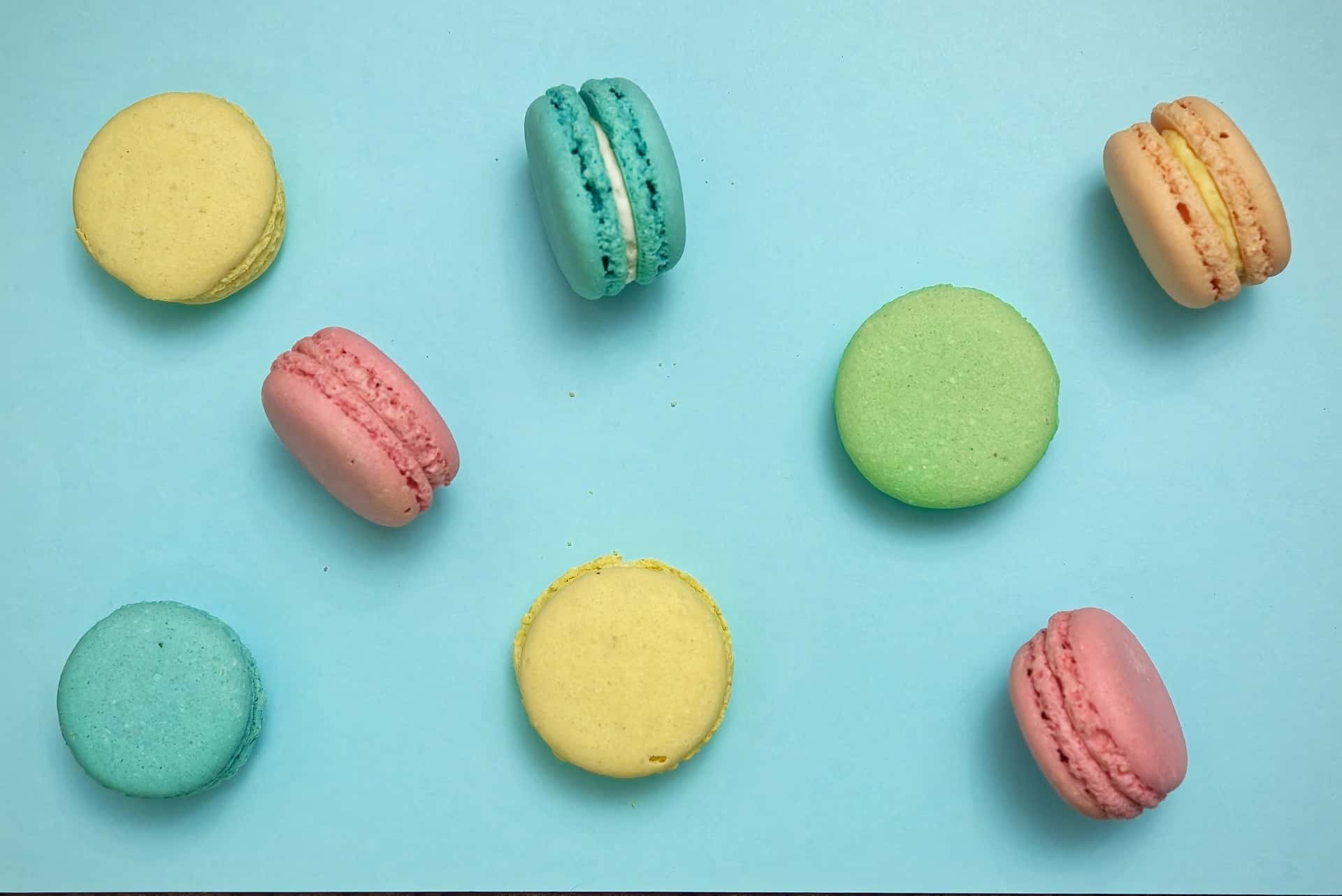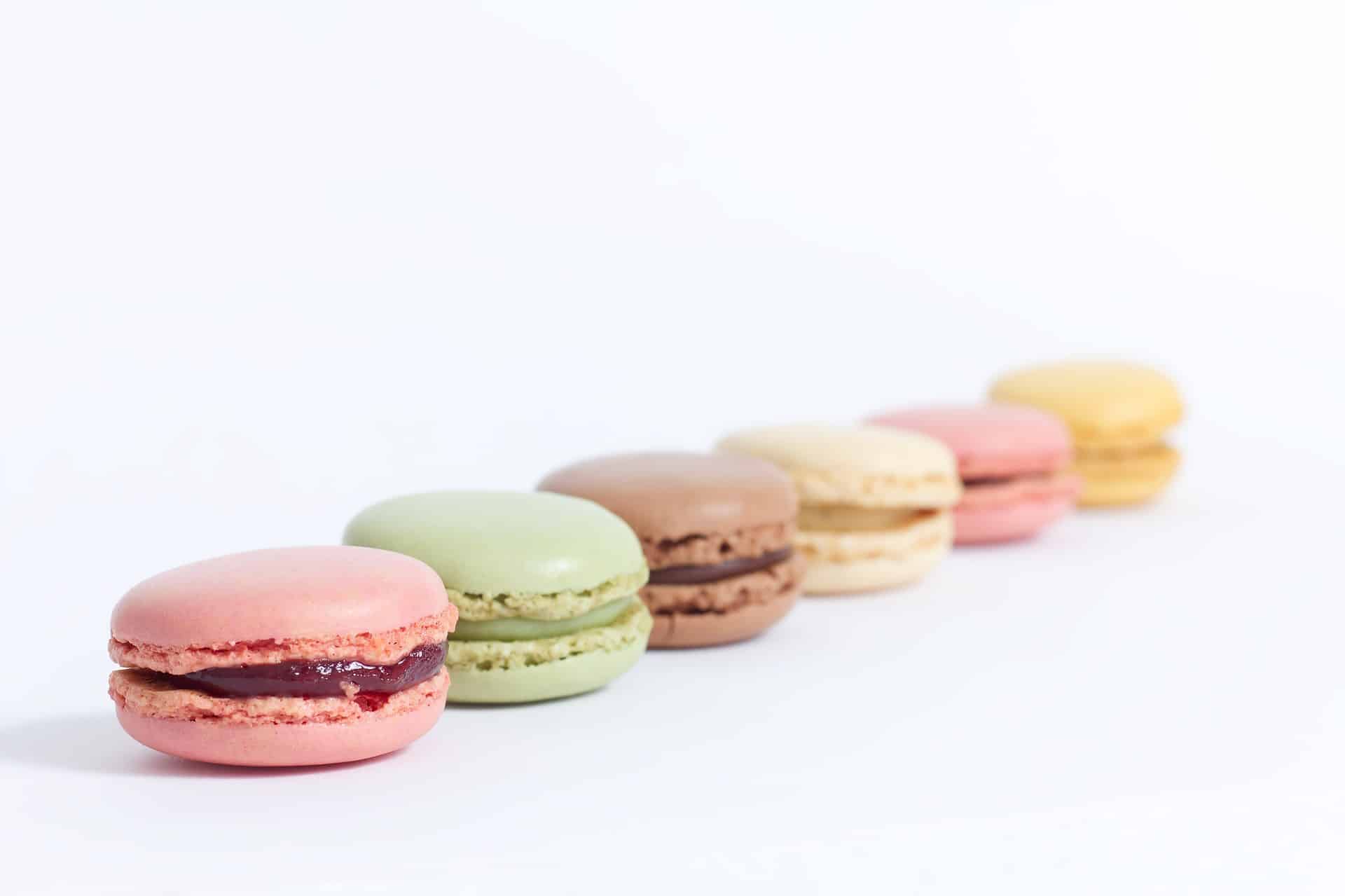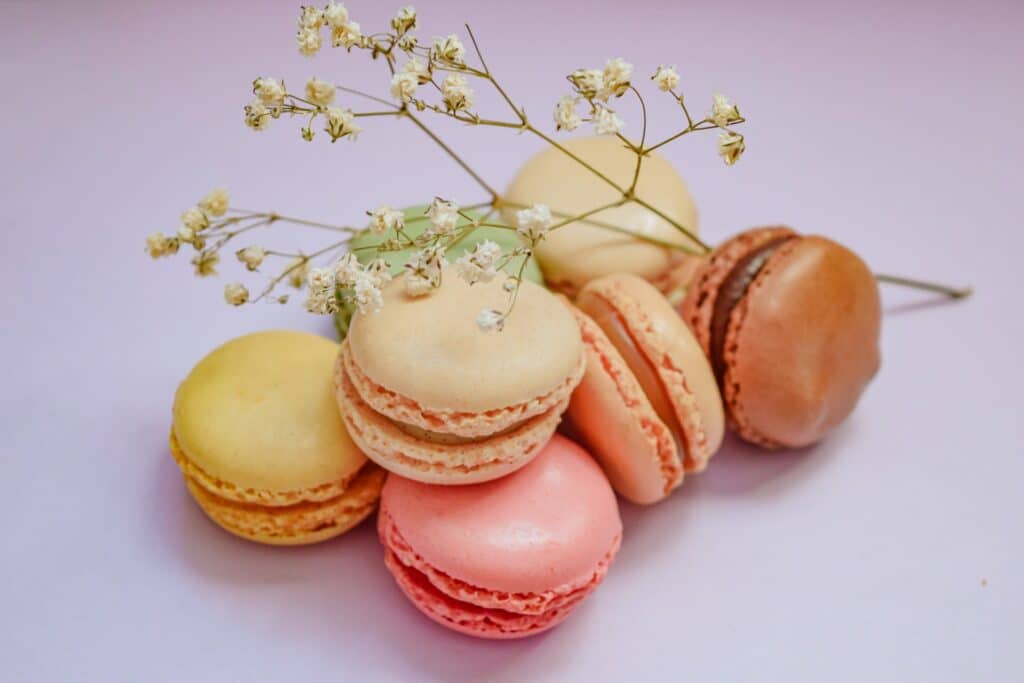Bonjour! The whole world is crazy about macarons. Savoring a macaron is indeed a delightful culinary adventure. Macrons are a delicacy and a tradition but how hard is it to make macarons? Fear not! With a little patience and practice, you can also create flawless macarons.
Today, we’ll discover the process of these delicate, meringue-based confections. So put on your apron, gather your ingredients, and let’s master the art of making macarons together! But first,
Delicate Appearance And Rich History
Macrons are French desert that effortlessly combine elegance and flavor. The macaron’s history can be traced back to ancient Persia, where a precursor to the modern macaron was enjoyed. In the 16th century, Catherine de Medici introduced the macaron to the French court. The macaron’s popularity soared in the 19th century, symbolizing French culinary excellence. Macarons continue to captivate taste buds worldwide, maintaining their reputation as delicate and elegant French treats.
Ingredients For Professional Macron Recipe

These are the fundamental ingredients for classic macarons. However, you can also experiment with different flavors by incorporating extracts, cocoa powder, or other flavorings into the shells. You can also make macarons by using various fillings like ganache, buttercream, or fruit jams. Now let’s move to the ingredients:
-
Almond Flour
This finely ground flour is made from blanched almonds. Almond flour is an essential component of macarons, providing their signature texture and nutty flavor.
-
Confectioners’ Sugar
Confectioner sugar is known as powdered sugar or icing sugar. It helps sweeten and stabilize the macaron shells.
-
Egg Whites
The protein-rich egg whites serve as the base for the macaron shells. Egg white provides structure and creates a light and airy texture.
This regular sugar is used to sweeten and stabilize the egg whites during the beating process.
-
Food Coloring
To add a pop of color and visual appeal to your macarons, you can use food coloring in gel or powder form. It is optional but can be a fun way to personalize your creations.
Essential Equipment for Easy Macaron Making
To make macarons, you’ll need a few essential pieces of equipment. These tools will help you achieve your macarons’ desired texture, shape, and presentation. So here are the key items you’ll need:
- Electric Mixer
- Piping Bag
- Baking Sheets
- Parchment Paper
- Macaron Template
- Cooling Rack
- Spatula or Flexible Scraper
- Sifter or Sieve
- Food Scale
Simple Steps to Make Perfect Macarons

Many worry about why macarons are hard to make, but it’s not complicated. At first, it can be a bit challenging. Still, practice, patience, and attention to detail will help you master the art of making macarons. Enjoy the process and savor the delightful results.
Prepare the Ingredients
- Measure all the ingredients accurately using a food scale.
- Sift the almond flour and icing sugar to remove lumps and ensure a smooth mixture.
Beat the Egg Whites
- In a clean mixing bowl, beat the egg whites on medium speed until foamy.
- Gradually add granulated sugar and continue beating until stiff peaks form.
Fold in the Dry Ingredients
- Gently fold the sifted almond flour and powdered sugar mixture into the beaten egg whites.
- Use a spatula or flexible scraper to fold the dry ingredients into the egg whites. Fold until the batter is smooth and well combined. Be careful not to overmix.
Pipe the Macaron Shells
- Prepare a piping bag with a round tip and fill it with the macaron batter.
- Pipe small, evenly-sized circles of batter onto baking sheets and line them with parchment paper or a silicone mat. You can use a macaron template underneath for guidance.
Rest and Dry the Shells
- Allow the piped macaron shells to rest at room temperature for about 30 minutes to 1 hour. This helps them form the skin, which is vital for the characteristic “feet” of the macarons to develop during baking.
Preheat and Bake
- Preheat your oven to the specified temperature.
- Bake the macaron shells for the recommended time, usually around 12-15 minutes. Wait until they are set, slightly crisp on the outside, and have developed a light-colored “foot.”
Cool and Fill
- Once baked, remove the macaron shells from the oven and let them cool completely on the baking sheets.
- After cooling the macarons, carefully remove the covers from the parchment paper or mat.
- Pair up the shells based on size and match them for assembly.
Fill and Assemble
- Fill a piping bag with your desired filling, such as ganache or buttercream.
- Pipe a small amount of filling onto the flat side of one macaron shell and gently sandwich it with another shell of similar size.
- Repeat until all the shells are filled and assembled.
Enjoy and Store
Macarons are best enjoyed within a few days of filling but can be stored in an airtight container in the refrigerator for up to a week.
Why Are My Macarons Tough And Hard?

Macarons are not supposed to be hard. If your macarons are turning out tough, it could be due to a few factors:
-
Over mixing
One of the common causes of tricky macarons is over mixing the batter. When folding the dry ingredients into the beaten egg whites, mixing until the batter reaches a smooth and flowing consistency is essential. Over mixing can result in excess air being released from the batter, leading to dense and tough macarons.
-
Incorrect Measurements
Accurate measurements are crucial in macaron making. Make sure you use the correct proportions of almond flour, confectioners’ sugar, and egg whites as specified in the recipe. Too much almond flour can make the macarons denser and less tender.
-
Improper Resting Time
Allowing the piped macaron shells to rest before baking is essential for developing the characteristic “feet” and a smooth top. However, if the resting time is too short or long, it can affect the texture. Under-rested macarons may be too firm, while over-rested macarons can turn out hollow and overly delicate.
-
Baking Temperature and Time
Baking macarons at the correct temperature and for the recommended time is crucial. If the oven temperature is too high or the macarons are baked too long, they can dry and tough.
-
Ingredient Ratios
The ratio of ingredients, mainly almond flour to confectioners’ sugar, affects the texture of macarons. Follow the recipe precisely and use high-quality ingredients for the best results.
Exploring Macaron Flavors- Are They Hard To Make?

Macarons offer a delightful canvas for exploring a wide array of flavors. At the same time, traditional flavors like vanilla, chocolate, and raspberry remain perennial favorites. The world of macarons has expanded its adventurous and creative combinations. Let’s take a delicious journey through the realm of macaron flavors:
Fruity Delights
- Raspberry is a classic flavor that perfectly balances tartness and sweetness.
- Lemon: Bright and zesty, offering a refreshing burst of citrusy goodness.
- Strawberry: Sweet and pleasing, capturing the essence of ripe strawberries.
- Passion Fruit: Exotic and spicy, lending a tropical twist to the delicate macaron shells.
Decadent Chocolate
- Dark Chocolate: Rich and indulgent, ideal for chocolate lovers seeking an intense cocoa experience.
- Salted Caramel: The harmonious marriage of sweet caramel and a touch of saltiness creates an irresistible combination.
- Hazelnut Chocolate: Memorable Nutella; this flavor combines the nuttiness of hazelnuts with the smoothness of chocolate.
Floral and Botanical Infusions
- Lavender: Fragrant and delicate, evoking a sense of tranquility and elegance.
- Rose: A romantic and subtly floral flavor that adds a touch of sophistication to the macaron.
- Earl Grey: Scented with the essence of orange, providing a distinctive and aromatic tea flavor.
Gourmet Adventures
- Matcha Green Tea: Vibrant and earthy, this Japanese-inspired flavor brings a hint of bitterness and a vibrant green hue.
- Pistachio: Nutty and slightly sweet, offering a delightful balance of flavors.
- Coconut: A tropical delight, imparting a creamy and tropical taste to the macaron.
These are just a few examples of the many flavors that can be explored when making macarons.
In conclusion, making macarons can be both an art and a science. While it may seem challenging at first, with the right techniques and practice, you can create beautiful and delicious macarons. Remember that macarons should not be hard; they should have a delicate and slightly chewy texture.



